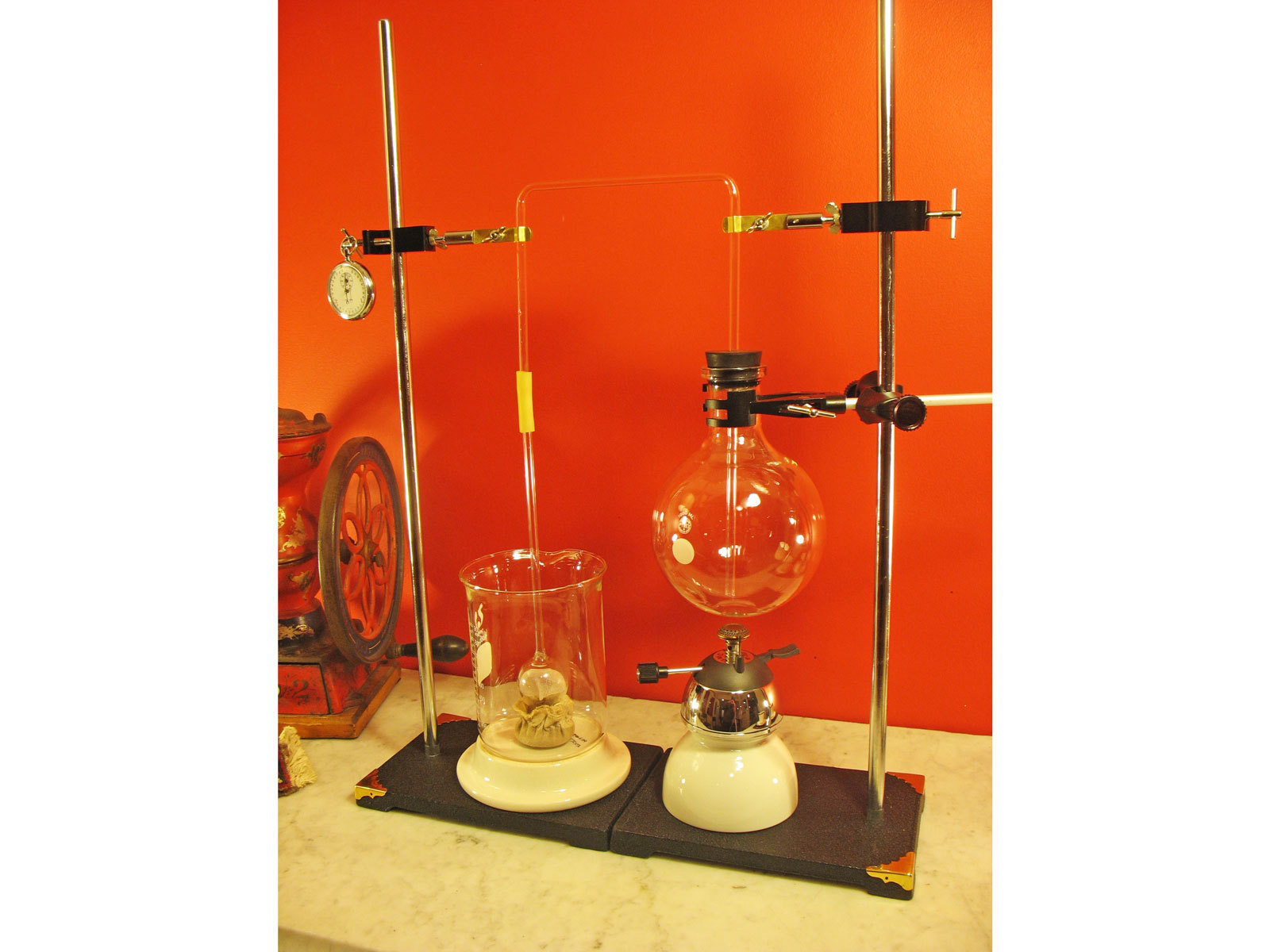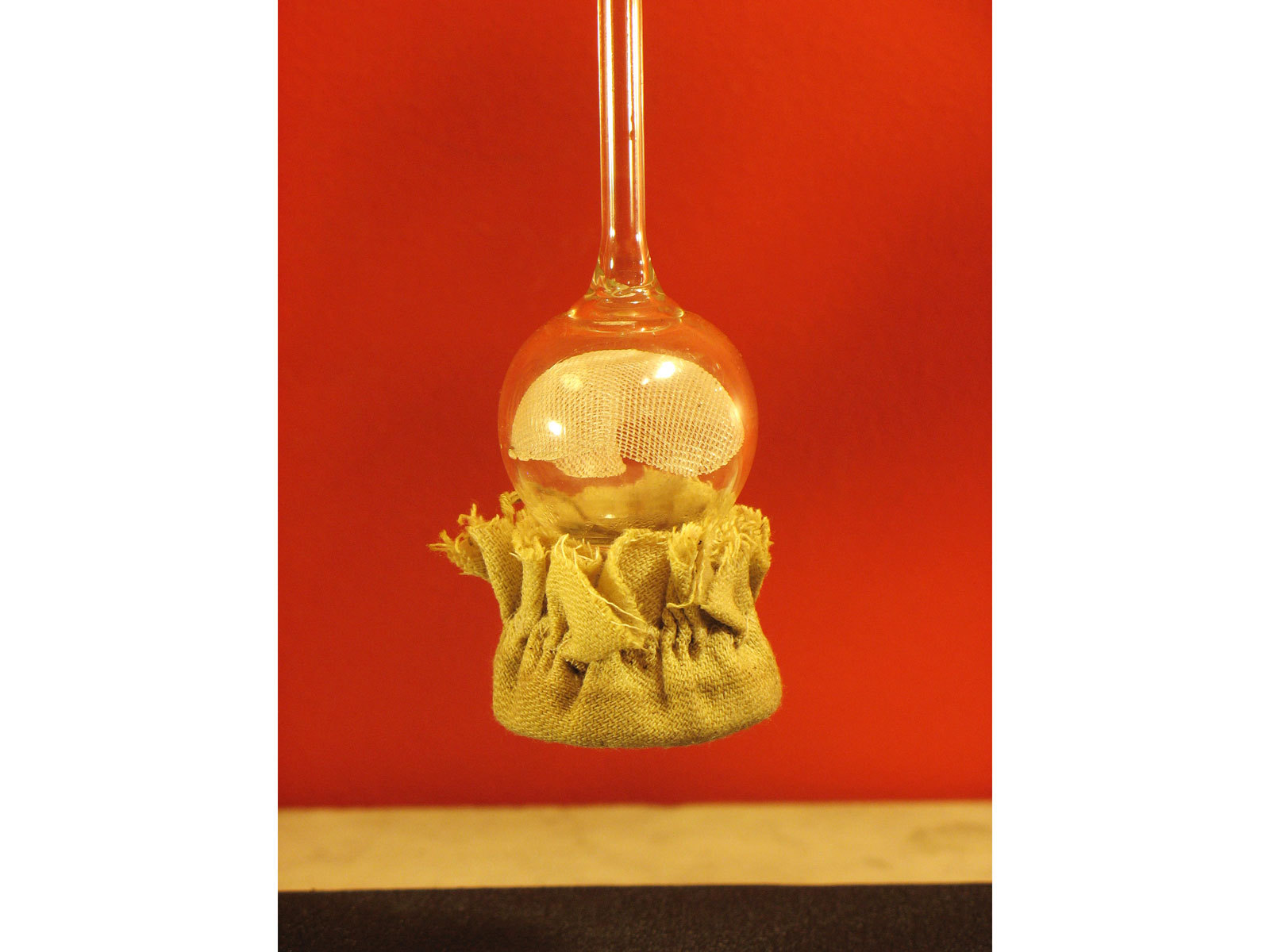The vacuum siphon coffee brewing method dates back to the 1840s. It produces some of the cleanest, smoothest-tasting coffee of any method. Commercial vacuum pots are available, but I wanted to heighten the drama of vacuum brewing by taking it into the realm of the mad scientist’s lab. Thus the Florence Siphon was born!
After studying original patent drawings and existing devices, I identified these key features:
- Water is heated in a boiling flask that has a tube leading to a second vessel containing ground coffee.
- The tube must have a filter, to allow the water to flow through but not the grounds.
- The filter must be submerged during brewing, so as to maintain a seal with the boiling flask.
- The second vessel must be accessible for stirring the slurry.
- The boiling flask must be large enough to create a sufficient vacuum as it cools to “pull” the coffee back through.
One drawback to early vacuum brewers was the constant danger of exploding glass. Today, we have plenty of high-quality borosilicate glassware that’s up to the task — it just happens to be found in the lab, not the kitchen.
Filtration was another challenge. I tinkered with a few options (including an unfortunate foray into shower heads) before arriving at an inverted thistle tube. This is a type of bulbed funnel that’s easy to cover with filter cloth. (Thanks to Dr. Jim Callan from Avogadro’s Lab Supply for this suggestion.)
I assembled my funnel, stopper, tubing, filter, and a beaker for the grounds. I filled my flask with preheated water (small burners can take a while to boil 500ml), poured 38g of medium-ground coffee into the beaker, donned my goggles, and lit the burner.
The water began to bubble quickly, and soon went straight up the glass tube and over to the grounds. After about a minute, the flask was nearly empty and I extinguished the flame. At this point, there was an abundance of expanded water vapor (steam) inside the flask, which prevented the water from returning.
I stirred up the slurry with a stick and then waited with great excitement. Would the siphon be able to draw the coffee back up? At just about the 2-minute mark, I saw the gorgeous brown liquid begin its ascent. This is due to the vacuum created by the cooling and contraction of water vapor in the boiling flask. It was tentative at first, but as the boiling flask continued to cool, the coffee started to move quickly up the tube, over and then back down to the flask below. Within another 20 seconds, the journey was complete: 420ml of coffee made it back, leaving 80ml of water behind with the grounds.
I removed the stopper and poured myself a cup. It was perfect! Smooth, bright, clear, and clean. Vacuum coffee is a step above a French press, and leagues above drip. Plus, when you brew with the Florence Siphon you get to don your lab coat and cackle maniacally. What more could you want from a cup of coffee?
Here’s how to build your own Florence Siphon.












